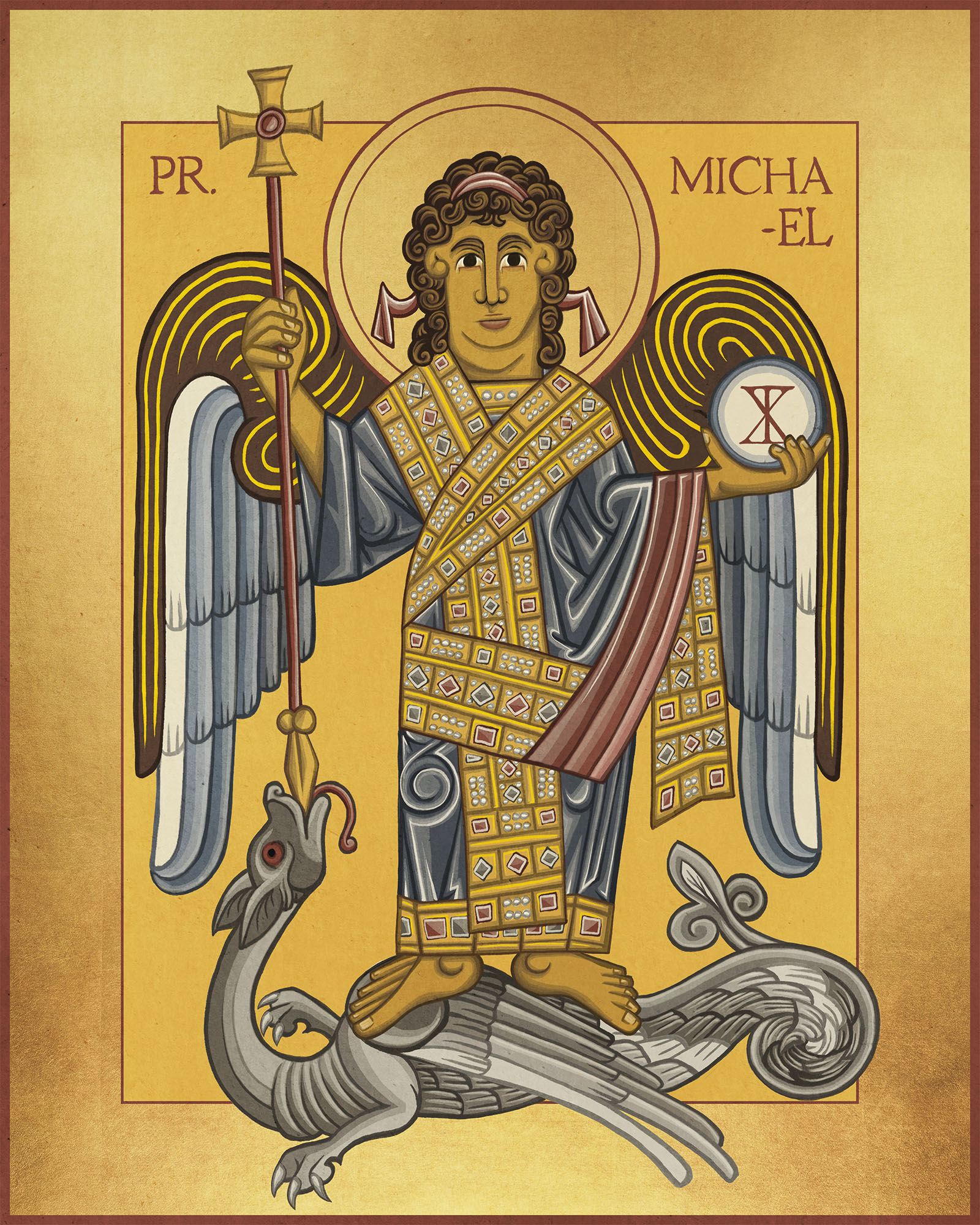
Among the created beings of the cosmos, the archangel Michael is one of the most profound in the revelation of the Scriptures and holy tradition. His titles are very numerous and varied—he is called Holy, Prince, and Commander—and each of these reminds us of an important role that Michael can play in our lives and the world.
Holy Michael (or, often, Saint Michael in the Catholic tradition) is a title that witnesses him as a worthy intercessor for us. In such icons, artists usually depict him in robes of authority, similar to the apostles, reminiscent of Roman senators. St. Michael, like all the saints in heaven, can be a great blessing to us when we seek him to pray on our behalf to God. A well-known example of this is the prayer composed by Pope Leo XIII in 1884:
“Saint Michael the Archangel, defend us in battle. Be our protection against the wickedness and snares of the Devil. May God rebuke him, we humbly pray, and do thou, O Prince of the heavenly hosts, by the power of God, thrust into hell Satan, and all the evil spirits, who prowl about the world seeking the ruin of souls.”
When Michael receives the title Commander (Archistrategos in Greek, or “Supreme Commander of the Heavenly Hosts” in the Orthodox tradition) we see him as the leader of the heavenly host. Commander Michael stands alone, often dressed in military garb and brandishing a sword across his chest. Here we witness the archangel as a fighter and a warrior, and he reminds us of his celestial power in the spiritual warfare that surrounds us in the world.
However, in the present icon of Michael the Archangel, he is named as Prince. While not as well known as a title today, it is nevertheless an important one found on many historic Byzantine icons and one that I’ve come to understand is especially appropriate in this icon’s prototype of Pr. Michael defeating Satan in a heavenly war. This icon reveals to us the moment described in St. John’s Revelation of the great war in heaven:
“And war broke out in heaven: that of Michael and his angels waging a war with the dragon. And the dragon and his angels waged war, and did not prevail, nor was any place still found for them in heaven. And the great dragon was cast down, the ancient serpent, the one that is called Slanderer and Accuser, the one that leads the whole inhabited world astray …” — Rev 12:7-9.
While it is obviously tempting at first glance to see the archangel clothed in military garb (and one often does in statues referencing this event) I don’t think this offers the most perfect vision for us to contemplate. For it isn’t the archangel’s military might by which he defeats the dragon, but ultimately by his bearing the justice of God. While the struggle in this event is unquestionable, this is not primarily the action of a military being — overwhelming his opponent by might — but of a judge who condemns the enemy through justice. Therefore, Michael, in the iconographic vision of eternal truths, stands on top of the defeated dragon, dressed in rich princely robes. It is not primarily through his might that the archangel has prevailed, but through his power to embody God’s kingly justice.
While Pr. Michael’s rich robes might be the first detail noticed that informs this perspective, it is even more pronounced in what he holds in his left hand. While the spear being thrust in the enemy’s jaws shows the dragon’s complete defeat, in his left hand the archangel holds a disc with a sacred monogram. The three Greek letters, Χ Δ Κ, compose the monogram and they abbreviate the traditional phrase Χριστος Δικαιος Κριτης, or Christ (the) Righteous Judge. While often all three letters are depicted on the disc, in this case I’ve combined them into a single monogram because to the English reader the individual letters don’t offer any clarity, so amalgamating them into a symbol seems appropriate.1 It’s also worth noting that in many depictions this disc is rendered as a sphere, alluding to the orb and cross that Christ holds as a symbol of royal authority. This is inappropriate as it suggests that the angel is like God in his sovereignty.
With that in mind, here is the central revelation of this icon (and one that is paramount, given our historic propensity for worshipping angels in our overwhelming confusing when we experience them): Pr. Michael the Archangel acts as God’s justice in defeating the dragon. In fact, I would go so far as the muse that without such a link to that source, even the glorious Michael risks being seen as prideful in his action—something depravedly inappropriate!
The feast celebrating Michael the Archangel, and indeed all the angels, is ancient. A very happy Michaelmas to you all!
- This symbolism goes even deeper, for as St. Symeon of Thessaloniki says, the disc is, “a theological symbol, teaching us that although Christ became incarnate, as God, He has neither a beginning nor an end.” ↩︎